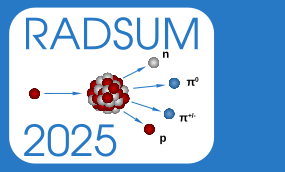Speaker
Description
In the context of the EuroSIG project, a carbon-ion gantry is being designed for possible installation at CNAO (the National Center for Oncological Hadrontherapy located in Pavia, Italy) and MedAustron (located in Wr. Neustadt, Austria). The current lattice design foresees superconducting (SC) dipoles and normal-conducting quadrupoles. Differently from the normal-conducting ones, SC magnets are sensitive to local beam losses, which lead to local energy deposition and potential quenches, thus inducing considerable downtime of the gantry.
This contribution presents explorative studies of energy deposition in the SC dipole magnets presently foreseen for the EuroSIG C-ion gantry. The studies are carried out by means of Monte Carlo simulations, using the FLUKA code to characterise ruling factors like beam spot size. In this exploratory phase, simulations were carried out considering simplified beam impact conditions.
Together with key results, the magnet geometry is briefly presented and implications on the gantry design drafted.
